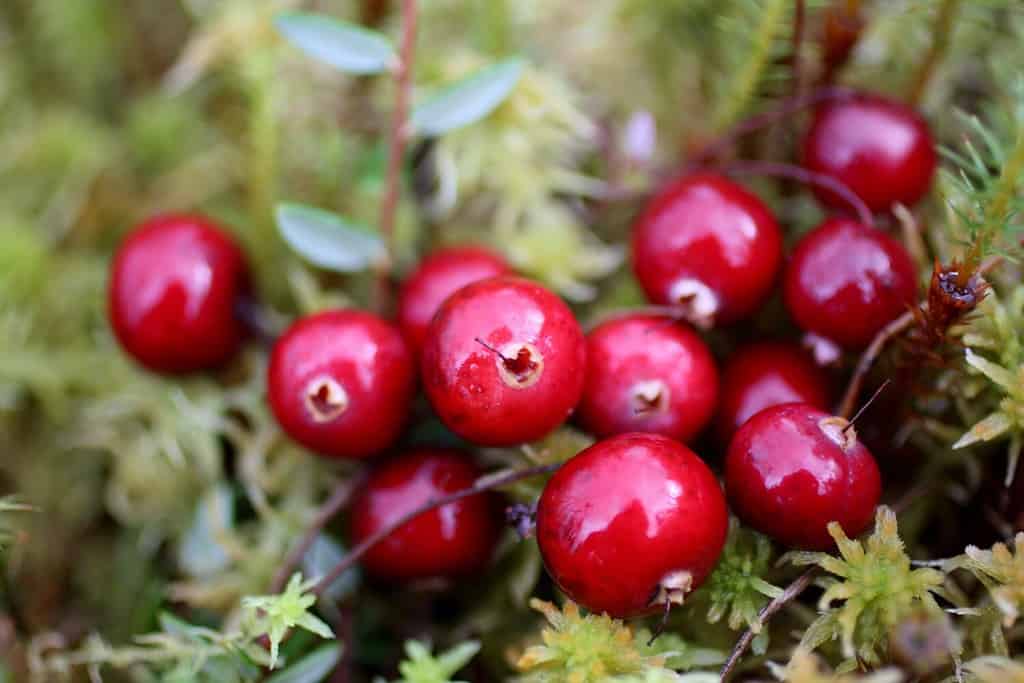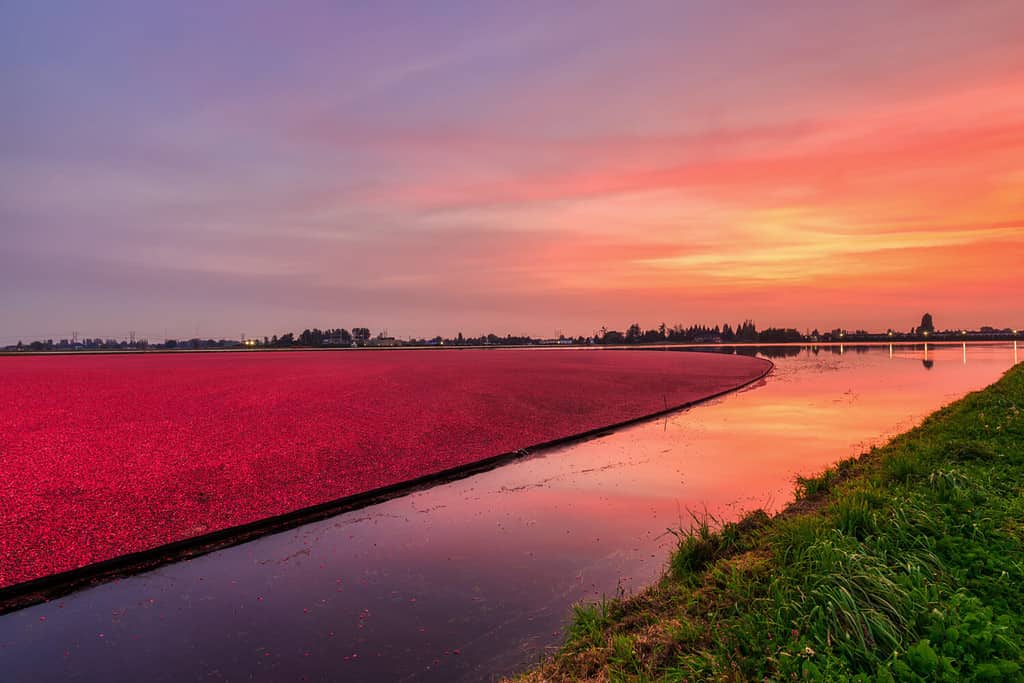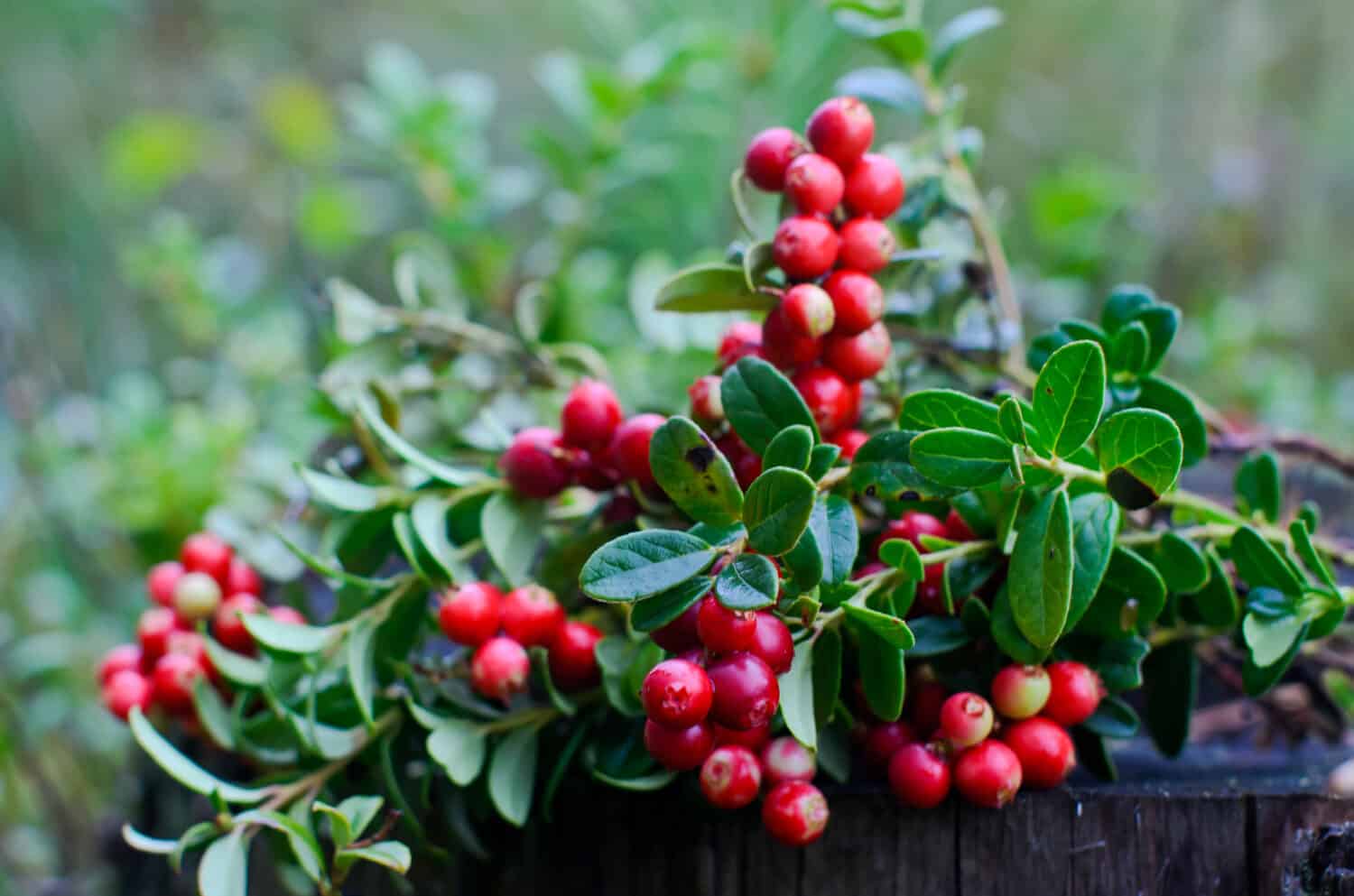Growing cranberries can be extremely rewarding. However, it does require a lot of patience and finesse. If you do it right, you’ll be rewarded with a bountiful harvest of bright colors and delicious flavors.
Luckily, if you have some basic background knowledge, growing cranberries isn’t extremely challenging. Below, we’ll go through everything you need to know before growing these delicious plants.

Cranberries require tons of sunlight.
©Irina Green 27/Shutterstock.com
Seeds or Plants? The Great Cranberry Conundrum
Before you even begin growing cranberries, you’ll need to pick between seeds or plants. While growing cranberries from seeds is possible, it is often more challenging than growing already-started plants.
Growing plants from seeds requires a significant amount of time and more expertise. It’s better to grow plants from already-started plants for at least the first time.
We recommend purchasing cranberry plants or bare-root crowns from a reputable nursery. The health of the plant absolutely matters, and that health is largely determined by how it was grown. Therefore, choose plants from quality sellers.
It also helps to choose plants that are already acclimated. You can do this yourself, but it takes extra time and patience.
Light and Soil Conditions – The Perfect Duo for Cranberries
Cranberries require tons of sunlight. Just like you crave cranberries, these plants will seek out the sun as much as possible. They require at least six hours of direct sunlight. However, if you are stuck with partial shade, don’t worry. These plants are adaptable and tolerant.
They do have significant preferences when it comes to soil, though. They prefer acidic soil with a pH of between 4.0 to 5.5. Cranberries are quite picky about their soil pH, so we highly recommend considering checking your soil before you plant.
If you need to add acidity, consider adding organic matter like peat moss or compost. Typically, these substances are acidic and will correct the soil.
Timing is Everything – Planting Schedules

Cranberries grow in beds called bogs.
©JamesChen/Shutterstock.com
You need to plant your cranberries at the right time if you want them to be successful. These plants are extremely picky with timing, as they are sensitive to temperature. You’ll need to plant then in early spring, but after the danger of frost has passed.
Cranberries have a relatively long growing season, so be patient. They need to be established before winter comes along.
From Planting to Harvest

Cranberry harvests occur from September to November.
©Natalia Korshunova/Shutterstock.com
Now that you know when and where to plant your cranberries, you need to care for them until they’re ready to harvest. Prepare for a slightly longer wait before your cranberries are ready for harvest. On average, it takes about two to three years for cranberry plants to mature and produce a substantial yield.
During the first year, cranberries are just starting to establish themselves. Taking good care of them this year is important, as they will be more sensitive. Be sure to keep the soil moist but not waterlogged. You’ll need to provide plenty of water during the first year.
In the second and third years, your cranberry plants will start producing flowers, eventually turning into the beautiful crimson berries we all adore.
It’s important to note that cranberries require cross-pollination. In other words, to produce berries, their flowers need to be pollinated with pollen from another plant. Consider planting multiple varieties or creating a bee-friendly garden to attract pollinators.
Companion Planting
If you really want your garden to succeed, try companion planting. Plants don’t grow by themselves in nature, so it doesn’t often make sense for them to grow alone in our garden, either.
Certain plants grow well next to cranberries and may even help increase yield. Others may harm cranberries, though.
Blueberries, lingonberries, and heathers are all great allies, as they thrive in similar soil conditions. Therefore, both types of plants can thrive in the same soil conditions.
On the other hand, avoid planting cranberries near plants that prefer alkaline soil, such as cabbage or cauliflower. These garden bedfellows may cause unnecessary competition and hinder cranberry growth.
Pest Control – Defending Your Cranberry Kingdom
Your cranberries cannot defend themselves against pests. Therefore, you’ll have to take up this mantle. Keep an eye out for cranberry fruitworms, cranberry tipworms, and black-headed fireworms, which can pose a threat to your crop.
You’ll need to implement regular monitoring and several types of organic pest control methods to keep these pests away. Insecticidal soap and neem oil often work well, but you will have to specialize your pest control method to the situation.
Winter Protection
Cranberries require multiple years to grow, so you’ll need to protect them throughout the winter. Luckily, winter time is “rest time” for cranberries, so they won’t actually need that much care.
You will have to protect them from extreme temps by adding mulch on top of them before winter arrives. Straw, hay, or pine needles also work. You can use whatever is available.
Frequently Asked Questions
Can I Grow Cranberries in Containers?
Yes, you can grow cranberries in containers. They like to grow in bog-like conditions, which can be done in a container. Choose a larger container than you think you need and fill it with acidic potting soil. Be sure to choose a container with good drainage, just like you would for any plant.
Ensure the container receives ample sunlight and keep the soil consistently moist. Container-grown cranberries may require more attention to watering, but with proper care, you can enjoy a harvest of cranberries right on your patio.
How Often Should I Water Cranberry Plants?
Cranberries do love moist soil. However, they don’t like waterlogged conditions. Therefore, you have to walk a fine line to keep them happy.
Aim to keep the soil consistently moist, especially during the warmer months. Water the plant deeply and thoroughly. Allow the top inch of soil to dry out between waterings, though, as this ensures you aren’t overwatering.
Monitor the soil levels regularly and adjust watering according to the weather conditions.
Do Cranberries Require Any Special Prunning?
Cranberries do not require much special pruning. However, they have a low, trailing habit. Their vines can become quite dense. Therefore, you may need to prune especially thick plants. Too little airflow can deteriorate a plant’s health and lead to diseases.
In late winter or early spring, before new growth begins, you can trim back any dead or damaged branches. We also recommend selectively pruning as necessary to thin out excessive growth. However, don’t prune when the plant is making fruit.
How do I protect cranberries from birds?
Birds are notorious lovers of cranberries, and protecting your crop from their peckish tendencies can be a challenge.
Netting is an effective way to safeguard your cranberries. Cover the plants with bird netting once the berries start to form. Ensure the netting is securely fastened to prevent birds from getting trapped.
Alternatively, you can create noise and movement in your garden by using reflective objects or wind chimes to deter feathered thieves. However, this method typically works worse for me than netting.
Can I Grow Cranberries from Store-Bought Berries?
Technically, you can grow cranberries from store-bought berries. However, this method isn’t reliable and won’t work all the time. Often, store-bought berries are treated to prevent them from sprouting. The conditions they were stored under may also be unknown.
Look for organic cranberries. These may work better. However, purchasing started plants or seeds is typically a better option (and often cheaper, too).
Do Cranberries Require a Lot of Fertilizer?
Cranberries need about the same amount of fertilizer as other, similar plants. However, they often prefer a slow-release fertilizer that’s acidic, particularly before they begin growing in the spring.
Always follow the instructions on the fertilizer. Don’t over-fertilize your cranberries, as excessive nitrogen can lead to excessive vine growth and not many cranberries.
The photo featured at the top of this post is © iStock.com/gitusik
Thank you for reading! Have some feedback for us? Contact the AZ Animals editorial team.






